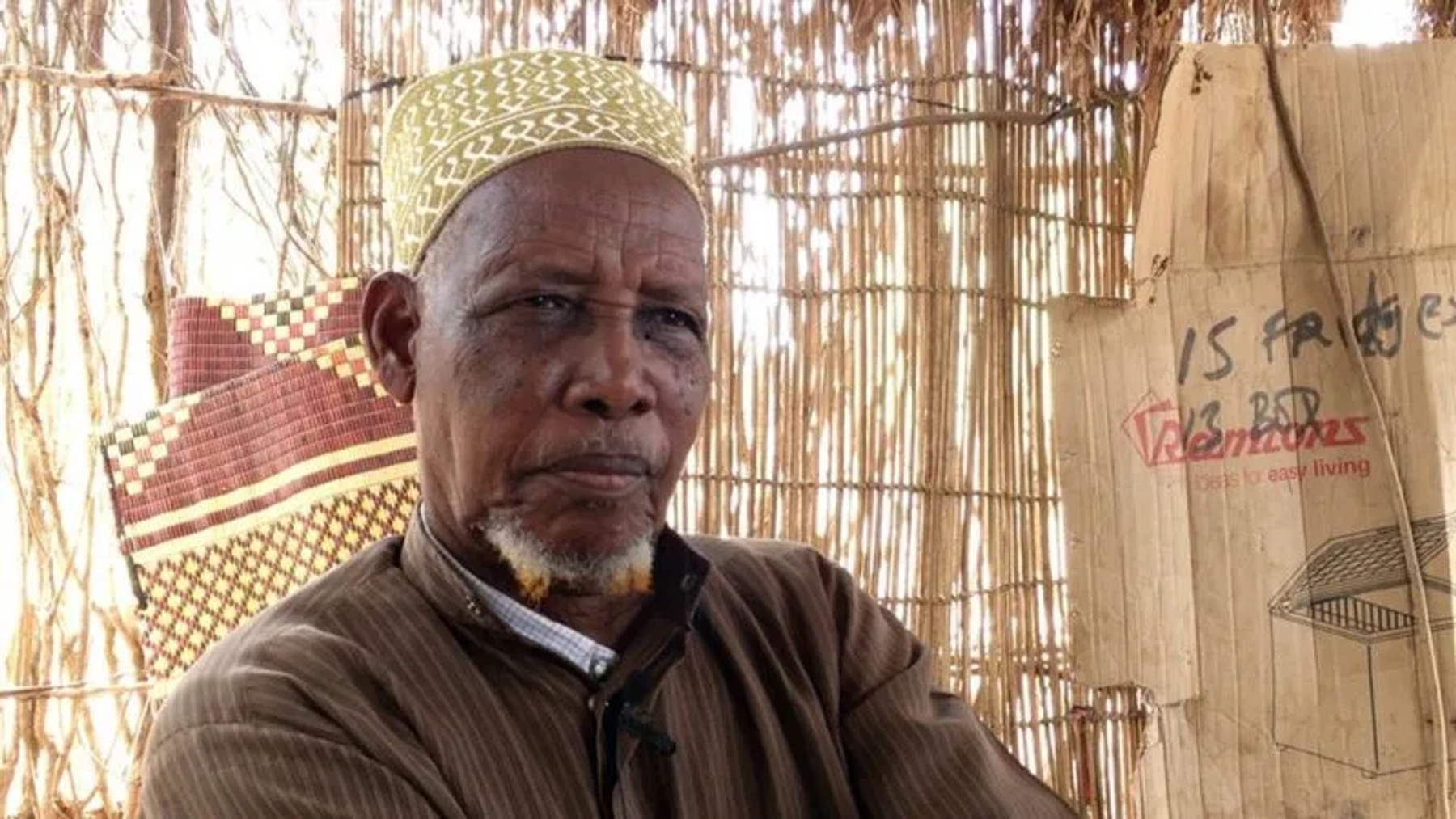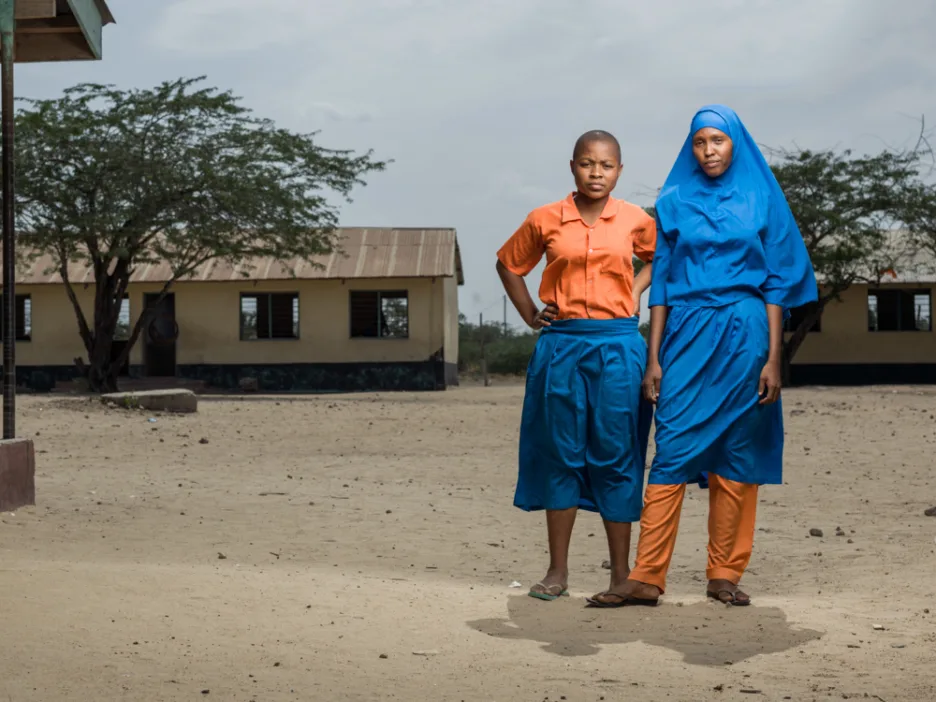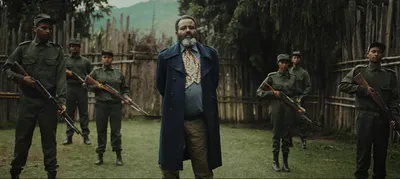Who are the Oromos of Tana River County?

Haji Kullisa Bona -Orma Oromo community elder.
The Oromo are one of Africa’s most populous ethnic groups, native to Ethiopia’s Oromia region and parts of Northern Kenya. In 2018, the BBC met with the Oromos in Kenya’s Tana River state, also known as “Tana River County,” who are estimated to number a quarter million people.
According to Haji Kullissa, an Oromo elder the BBC interviewed, the Oromos of Tana River County descended from a Borana sub-clan known as Warra Dayyu or Warda, who migrated from Mega, now in Oromia’s current Borana Zone, to Tana River County some 528 years ago. The nature of their migration and circumstances caused them to break into three distinct new identities, namely: the Orma, Wardey, and Munyo Yayya.

Under the Gadaa system, a clan or group of individuals who are considered Lammii (citizens) could not migrate to a territory that is not part of their land without permission. When the Warda started to migrate, the Hayyus (indigenous scholars) rejected it. Haji Kullissa told the BBC that this occurred during the era of Abbayi Baabbo Hoorroo, the Abba Gada of Borana (1658-1665) who sent a Hayyu named Kotte Goollo Waata to persuade the migrating Warda to return. Kotte Goollo Waata stayed with the Warda for seven days and tried to persuade them but they refused, saying “nu ya orminee.” “We have become foreigners.” Hence, the name ‘Orma.’
The Exodus
Thus the Warda Oromo migrated and split. The first was led by Anna Akkar’s group and the second by Anna Bakkee. They are both Warda. They say that the burial grounds of both Anna Akkar and Anna Bakkee still exist today.
“The group led by Anna Akkar headed towards the Dawa River. However, it was pouring heavily that day, and they were not able to cross. So they returned across the Elwaq road which is now in Mandera County in Kenya. They passed through there and migrated towards Borana lands in Kenya (Waaso) where they settled in Wajir,” Haji Kullisa says.
According to Haji Kullisa, “The second group led by Anna Bakkee was successful in crossing the Dawa River and reaching Waam, now known as Jubaa Land in Somalia.” However, other tribes came from different countries and settled on their land which led to their Gadaa diminishing with time. Not only that, many Warda Oromo assimilated into Somali due to pressure and changed their language and religion.
The Warda were first mentioned in an Arabic source in the 15th century. According to Trenton, they migrated to the Juba area in the 16th century. In the early 19th century, they were at the height of their power where they inhabited almost all of the west bank of Jubba River to their east bordering the powerful Geledi Sultanate. In the 19th century the Darod Somali, particularly Ogaden, advanced southwards across the Dawa River. The first attempt in 1842 failed, but in 1844 they tried again and were allowed to enter as clients (shegats).
The usual method of Darod penetration into a new area was to adopt a client relationship with the people already there. In practice, this meant they became herds boys who were allowed to keep some animals of their own. Then these clients slowly consolidated their numbers until they had achieved parity with or even superiority over the original inhabitants. Around 1865, when smallpox epidemiology weakened the Warda, they were attacked by Darod from the North and to a lesser extent by the Kamba from the West and the Masai from the South. The Darod clients joined the conflict and this expedited the severity of the conflict and the heavy defeats of the Warda.
In 1867 the Somali invited the Warda elders for a great peace offering, which they accepted. However, the feast turned out to be an ambush, and thousands of Warda were slaughtered. Extensive Somali raids followed the offering. Most of the remaining Warda were forced to cross the River Tana and sought refuge along the southern and eastern banks of the Tana River. Large numbers of Warda men were killed and an estimated 8,000 women and children were captured. Women and children were often exploited by the Somalis and sold as slaves.

Since there was a shortage of women under the Somali, they took Orma women as concubines and some were even married to the Somali. In order to protect the remaining free Warda on the east bank of the Tana from the Somali, in 1909 the few remaining Warda on the east bank of the Tana were moved by the British to the west bank. This Warda on the west bank became known as the Tana Orma. The decimation of the Tana Orma also resulted in their becoming an isolated ethnic group that no longer shared a border with other Oromo-speaking people, something they were warned about.
The Somali-Oromo Agreement and the Wardey
Already in the 19th century, there were regular discussions about whether the British should ignore slavery in the Juba area or should take action against it. Theoretically, the British were opposed to any form of slavery, but in practice, they condoned it. They knew that they wouldn’t be able to enforce any agreement with the Somalis if the abolishment of slavery was made a pre-condition.
When Kenya became a British protectorate, this debate resurfaced as it was considered disgraceful to have slavery in the British Empire. In the Tana River District and the North Eastern Province, this debate focused on the position of the subjugated Orma amongst the Somali community. It was clear that the Orma clients had not become clients out of their free will; they were in fact serfs and could not leave the Somali. As long as they paid tribute and surrendered symbolically, these Orma clients were often allowed to live in their own villages and keep livestock.
With some pressure from the British, the Somali agreed to the Somali-Oromo agreement, which stated that the Orma could return to their brothers on the right bank of the Tana, as long as they left half of their livestock with the Somali. This agreement also implied clearly that the Somali should remain on the left bank of the Tana. A good number of the subjugated Orma returned, but since the British had limited military power, they were not in a position to guarantee a return of all the Orma that wanted to cross the river. Initially, these returnees were called Wardey. In 1939 the Somali refuted the Somali-Oromo agreement and no subjugated Orma crossed the Tana until after Independence.
Independence
After the Independence of Kenya in 1963, many of the remaining subjugated Orma returned; this also explains the huge population increase of the Orma. In 1971 President Kenyatta officially welcomed the Wardey. Nowadays the term Wardey is mainly used for the clients who returned after independence. Most of them do not speak Orma. The ones that migrated back during the colonial period are called Orma.
Due to the different eras of Ormas migrating, skirmishes and differences between themselves led to them dividing themselves into three groups/tribes. The first group that reached safely (Anna Bakkee) and others who came in the early pre-colonial period called themselves Orma. Those who came from the late pre-colonial and colonial period called themselves Munyo Yayya, a name derived from the grandfather of the man who restored the Gadaa System of the Borana Oromos, Ali Gurraacha Yaayya Munyo Yayya. The name is famous in the Borana child naming ceremony which is also part of the Gadaa System. Some of the Warda people who call themselves Munyo-Yayya have intermarried with the Pokomos (a tribe in Kenya) and hence have a few Bantu features.
The group that came after independence was known as Wardey as they were referred to by the Somalis; they speak broken Afaan Oromo owing to exposure to the Somalis but some of them were reassimilated into Borana clans.
I finish by establishing that Orma, Munyo Yayya, and Wardey are all Warda Boranas who were unfortunately divided by the greed of politics. I pray and hope that they will be unified by a shared Oromo identity. Some have already begun to reclaim their identity as Oromos.
We need your support
We trust you found something of value in this article. If so, we kindly ask you to consider helping Curate Oromia continue its work.
If you believe in the importance of independent voices and honest reporting, we invite you to support our efforts through our GoFundMe campaign.
Every contribution, however small, goes directly to our writers and the expansion of our reach.
Thank you for your support.



